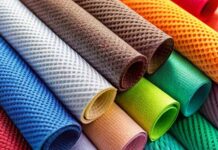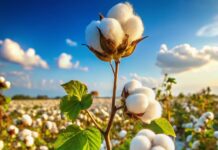Every year, approximately 5.8 million tonnes of textiles are discarded in the European Union (EU), equating to about 11–12 kg per person. This staggering figure highlights a significant environmental challenge, as the consumption of textiles ranks as the fourth largest contributor to negative impacts on the environment and climate change. The current linear model prevalent in the textile industry, characterized by low rates of reuse, repair, and fibre-to-fibre recycling, is a major contributor to this issue. Most textile products are designed without considering quality, durability, or recyclability, leading to waste and resource depletion.
To combat these challenges, the European Commission has implemented the ‘EU Strategy for Sustainable and Circular Textiles,’ which aims to transform how textiles are produced and managed. Approved in March 2022, the strategy outlines a vision for 2030 where all textile products available in the EU market are durable, repairable, recyclable, and predominantly made of recycled fibres. Additionally, by this time, the fast fashion model is expected to be obsolete, replaced by a system that emphasizes high-quality, sustainable products. This shift aims not only to benefit consumers but also to ensure that the textile sector remains competitive, resilient, and innovative.
A critical component of this transition involves adapting the current linear business models of textile companies to more sustainable circular models. The growing consumer demand for sustainable and recyclable textile products underscores this necessity. Currently, less than 1% of textile waste is subjected to fibre-to-fibre recycling. However, advancements in recycling technologies are being made, with many expected to reach industrial scale by 2030. These innovations hold the promise of recycling up to 70% of Europe’s textile waste in a closed-loop system, provided that the necessary infrastructure is established.
Despite these technological advancements, significant challenges remain, particularly concerning post-consumer textile recycling. The complexity of textile materials and rapid technological changes complicate the recycling processes and their environmental impacts. The existing literature on textile recycling encompasses various aspects, including recycling technologies, environmental impacts, and the implementation of circular business models, yet there is still a need for accessible and comprehensive resources.
To address this gap, the latest report aims to provide an updated and practical overview of the current state of textile recycling. By exploring different recycling technologies, their advantages, and limitations, the report presents a holistic view of the industry landscape. It features a compilation of companies engaged in technology development and recycling operations, detailing their current and anticipated production capacities. It also highlights key facilitating technologies and virtual platforms that support textile recycling initiatives.
This downloadable white paper emphasizes the importance of empowering textile companies to transition to circular models by providing them with relevant information and resources. This information has been gathered from scientific articles, reports, press releases, direct communications with companies, and participation in various industry events. While the focus is primarily on Europe, noteworthy initiatives from North America, Asia, and Australia are also included to give a broader perspective.
In conclusion, the transition toward a circular economy in the textile sector is not just an environmental imperative but also a competitive necessity. By embracing sustainable practices, the industry can reduce its footprint and contribute to a more resilient economy. The collaborative efforts of stakeholders across the value chain will be crucial in realizing the goals set out in the EU strategy and ensuring a sustainable future for textiles.






























